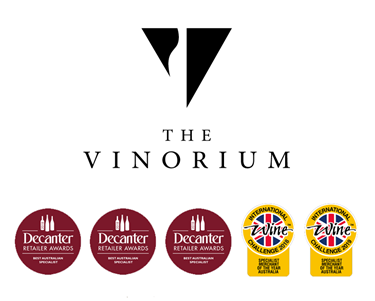 The UK's No.1 Australian Wine Specialist 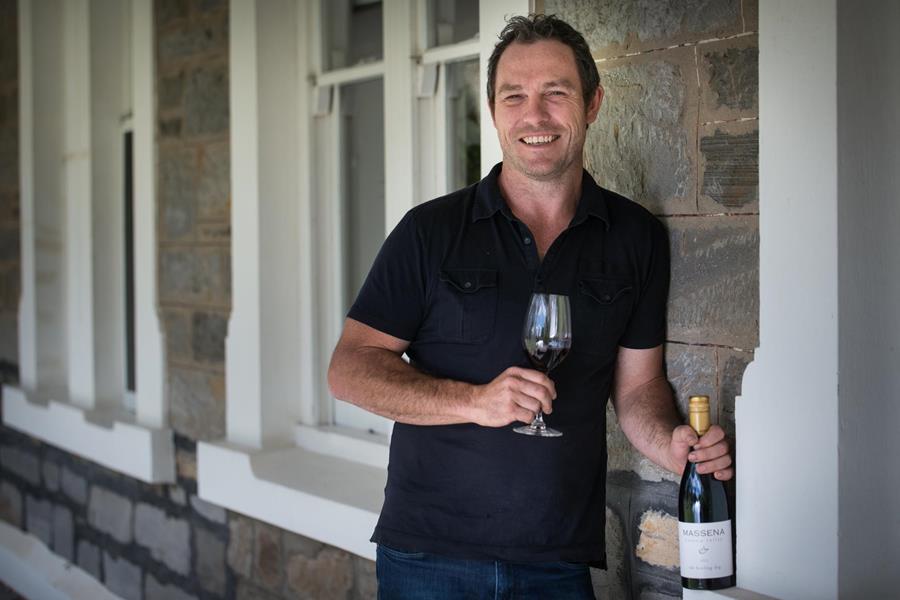 "For a young country like Australia to have something older than the 'old world' is a great wine story for us 'new world’ producers." Jaysen Collins, of JC's Own & MassenaThe term 'Old Vine' seems overused as little more than a marketing ploy, however it does mean a great deal to Australia. Unlike any other country, Australia has its own Old Vine Charter which catalogues and classifies its venerable vineyards. These unique ancient vines have played – and continue to play – a pivotal role within Australia’s winemaking scene. They are behind some of the country’s most extraordinary wines and indisputably, they have helped develop the incredible reputation of Australian wines across the globe. Who better to ask about the importance of such heritage than Barossa born and bred Jaysen Collins. Jaysen heads up winemaking at Massena (initiated by saving a plot of gnarly, ancient vines from being pulled up by a bulldozer) and of course, he is the creative force behind JC's Own. Jaysen on the importance and the magic of Australia's old vines My generation of wine producers grew up with the stories of the winemaking heroes of the Barossa, staving off the vine pull of the 80s and making epic red wines through the 90s from the old vines across the Barossa.
It’s definitely a romantic notion. As times have moved on from these days, we get to walk amongst these old vines now with our own stories, as we have become lucky enough to work with some of these ancient plants that still produce amazing quality fruit. The combination of the Barossa culture and our island home seems to have been the perfect blend to retain this viticultural history. The Barossa landscape was set up on a wine company being supplied by a grape grower. This has set the fabric of generational families that have passed down the same plot of land as farmers, meaning the fruit is accessible to anyone that can prise some grapes from them. We have also managed to hold off Phylloxera, due to our convenient bio-security method of being so isolated. For a young country like Australia to have something older than the 'old world' is also a great wine story for us 'new world’ producers. But old vines are more than a story. What we are talking about is wine quality and this is where our market based grape buying also has a benefit. The main reason the old vines are still there is because they produce good fruit. If the resultant wines were bad, no one would be buying and the vineyard would be pulled out. So, what we are talking about, when old vines are in the mix of conversation, is really referencing the seeking out of great vineyards, which can be young, old or in between. I find some Shiraz at 20-40 years old is in a sweet spot on the right soils as an example. The recent drought years have put these old vines to the test, with minimal irrigation and the resultant dry soils contributing to the frost risk across the region. In these conditions it’s the Grenache and Mourvèdre bush vines that seem to stand out and soldier on, but I am biased in my love for these varieties. Their natural vigour, seen as bad in the past, contributes to their ability to produce year in, year out and ride the wave of long term and human influenced climate patterns. Some of our old white varieties also continue to hold their own. Over the past five years I've been restoring an old mixed white block (that would have been made into fortified back in the day), planted to Chenin Blanc and Crouchen (back who knows when). With minimal irrigation, given some love and attention and pruning for new, strong growth, I have been able to lay down new canes across most of the vineyard and the old vines have sprung back. The yield curve is strong in these weary vines, given a bit of TLC, going from 180 kgs a few years back to 2,500 kgs in season 2021. This old mixed planting, like many others across the Barossa, has another benefit that modern vineyards don’t have; acidity from Chenin Blanc as it ripens later than the Crouchen. Just as a small proportion of Mourvèdre gives tannin when interplanted with Grenache, which is common amongst surviving vineyards of this varietal. But being honest, if the vineyard happens to be old there is a certain magic to them. I’m sure you don’t visit Rome for the contemporary architecture, if it is good it is worth checking out, but we know you are really there for the historical sites. Humans are emotive creatures, especially after wine and I conjured up these words for my Angaston Grenache (off 150 year old vines) after a few glasses:
 Highlights from our JC's Own and Massena collections 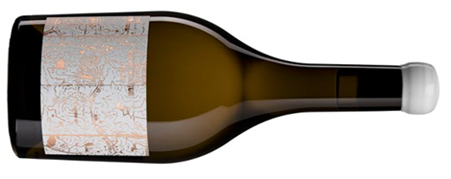 JC's Own Lobethal Chardonnay 201997+ - 98 Points - Stuart McCloskey “There is so much to like about JC’s new release; texturally the wine is on point for me which is a direct result of the wine being aged on the lees for 18 months. Bottling without fining or filtration adds another layer of textural interest. The bouquet expands with ripe apples, poached pear, Florence fennel, a little salinity, confit lime and minerality. I recommend some time in a decanter which will help the perfume to expand. Warming ginger creeps through. JC prefers to have fun with his wines however, there is a serious edge to this one. Medium to full-bodied, expansive and oozes generosity. There’s an oxidative character which I really enjoy – the textural grip, firm structure and vein of acidity are fabulous. It’s refreshing to see an Aussie winemaker producing a Chardonnay which exudes character. I am tired of sampling fashionably shy, limp and searing acidic wines. For me, this is as ‘texturally’ perfect as a young Chardonnay gets. There is tangible mineralité character which works tunefully with zips of lemon, lime, a light spicing and oxidative orchard fruit. The way the flavours fan out on the finish is delightful – the length is super impressive. The sculpted, textural personality makes this one of the top Aussie Chardonnays of 2020 / 2021. Sold out domestically (no wonder) and I believe we are the only ‘physical’ stockist.’ Do not overchill. Drink from now to 2030. Served using Zalto Bordeaux glassware. 98 Points – Magdalena Sienkiewicz "Always lots of joy bottled under JC’s labels. The perfume is vibrant and complex, abundant in orchard fruits and orange marmalade. The aromas build in the glass as the wine aerates revealing a graceful vein of minerality and beeswax. The palate is equally compelling. On entry, zesty citrus and juicy yellow peaches open up before the show is stolen by cascading confit lemons, minerals and ginger with a dusting of warming spices. JC’s wines are packed with intrigue and vivacity, which I absolutely love. The Lobethal Chardonnay is no different – it is exciting, beautifully textural, grippy and full of charisma. Stunning! Sampled using Zalto Bordeaux glassware without decanting." £27.50 per bottle   JC's Own Greenock Shiraz 201897++ Points - Stuart McCloskey "The perfume is simply glorious and unfurls with coffee, chocolate, blackberry, dark cherry, raspberry, leafy / herbal notes, sweet spice, clove, warm earth following a downpour, liquorice and a dusting of white pepper. The palate is supple, with satiny fruit effortlessly sailing across my palate. There is richness but it’s handled judiciously – minerality striking a firm cord. This is a grown-up, sophisticated Shiraz which is immensely pleasing. Dark raspberry sweetness juxtaposed wonderfully with the French oak and lithe tannins. This is beautiful. Really beautiful and in all honesty, has taken me by surprise. The spice develops as do the flavours (plums) which expand with each passing minute. This is full of charisma and will only get better (drink now to 2035). Ensure to decant for 2-4 hours. Served using Zalto Bordeaux glassware. A standout Shiraz.” £36.50 per bottle   JC's Own Rock: It GSM 2018Mike Bennie (The Wine Front) "From Jaysen Collins of Massena fame, this is a punchy wine from this excellent producer. All those varieties are co-fermented – a defiance of the blending norm of many Barossa producers. It’s thick and slick with deep flavour, inky consistency, muscular tannins and a soft, syrupy finish. All that said there’s a tension in the wine despite the heft and flavours, though mostly about ripe berry, plummy fruit, show licks of sarsaparilla, savoury spice and malt with some meatiness. It rolls full and ponderous through the palate in the best possible way. It’s a thumper done with shape and form in mind. It’s very good." £28.95 per bottle  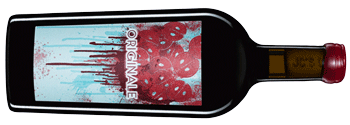 JC's Own Originale Grenache 2016Jaysen Collins (winemaker) "I started this JC's Own project in 2015 with this wine. I started making wine based on a love of grenache but had moved away from this in the wines I was making. I was trying saperavi, tannat, primitivo, barbera - the list goes on and on. The grind of making wine to a style and a market had slowly worn down my passion for the industry. So I kicked myself in the bum and set out to make a wine just for me - hence the JC's Own. I like grenache that is a bit funky, gassy and reductive, a bit more along the line of village Beaujolais. So I picked a vineyard I'd been using a bit earlier, went with 100% of the bunches and just started foot treading it to see where it would end up. I'd seen some street artwork in my travels in Spain, got a friend to knock up a label based on my recollection, so for me this was a bit orginal (or orginale for the Iberian connection) in its concept" £28.95 per bottle   JC's Own Wermut 2015Jaysen Collins (winemaker) - Vermouth, the name derived from the German 'Wermut' for wormwood, was usually made to cover up some flawed wine. Add some aromatics and a bit of spirit and all is made right again. I wanted to try it on the opposite spectrum, make the best white wine I could, source some premium herbs and spices and have a bash at it. So this 2016 vintage dry Wermut is made from permium Marsanne, grown on the western ridge in the Barossa Valley. The wine is wild fermented and aged on lees for texture and body. The organic herbs and spices are infused into the wine base for around two weeks to fully extract aromas and flavours. After removing the botanicals, neutral spirit distilled from premium Barossa grapes is added. The Wermut is aged for six months to mature before bottling without fining an filtration. Botanicals used: Wormwood, Juniper Berries, Rosehips, Lemon Peel, Lemon Myrtle Leaf, Chamomile Flowers, Dandelion Leaf, Angelica Root, Hibiscus Flowers, Ginger Root, Vanilla Pods, Jasmine Flowers, Hawthorn Berries, Allspice Berries." £17.95 per 50cl bottle   Massena Stonegarden Grenache 201797 Points - James Halliday "Hand-picked in two parcels from the original ancient vine plantings (1857), fermented and aged on skins in a ceramic egg until Oct '17. The second parcel was 100% whole-bunch fermented and matured in used puncheons. You might guess a $100+ price. This is a really attractive varietally pure wine, with very good colour and structure." £36.95 per bottle  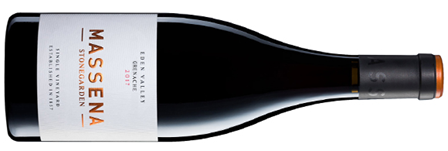 Massena Stonegarden Grenache Mataro Shiraz 201797+ Points - Stuart McCloskey “Single vineyard wine from the distinguished Stonegarden vineyard in the Eden Valley, with old vine heritage and limited production. The nose is dark, brooding and intense – warm earth, dried rose petal and dried cake spice mix lift with aeration. Dry, mountainous herbs unfurl with old sage bush, rosemary and dried thyme. A little old wood fire smoke adds to the intrigue. The palate surprises with a graceful wash of sweet black and red fruits tinged with mineral, smoke and earth. The tannins are silky and the acidity is bright and alive. Rhône-esque without emulating. Vivid and highly inviting. Such a lovely wine. Drink now to 2030. Served using Zalto Bordeaux glassware” £36.95 per bottle   THE HISTORY OF AUSTRALIA’S OLD VINESAustralia’s rich winemaking and viticultural history dates back to the early 19th century and the country boasts some of the oldest grapevines in the world. In fact, some of the country’s most treasured vines are more than 150 years old! The survival and stamina of these rare, old vines owe in large their thanks to the special sites on which they grow, many of which are historic in their own right. They are also a testament to the generations of dedicated winemaking families who have long cultivated and cared for them.  HOW OLD IS 'OLD'? The answer is not clear-cut and varies around the world or even from region to region. There is also no universally accepted legal definition of old vine. However, it is important to note that grapevines can live in excess of 125 years and after adolescence (their first 20 or so years), the vines’ yields start to decrease. This is one of the main reasons why in many parts of the Old World, Bordeaux in particular, maturing vines are often replanted before they reach the age of 30-35 years old. The French use a term 'Vieilles Vignes' and although there is no agreed definition of old vines in France, it usually references a product of notably old vines or simply wines made with some of the oldest vines of one’s estate. Depending on the region, old vines can be 35-50 years old in cooler areas like Champagne or Burgundy, while in the drier South, where the vines are capable of successfully ageing further still, Vieilles Vignes can designate wines made of 60, 80 or even 100 year old vines. There is one winemaking region which takes the lead in protecting, cultivating and recording their precious old vine material and it is no other than the mighty Barossa Valley. For as much as the phrase 'old vine' is overused or simply lacks definition (particularly in the Old World), it is central to the heritage of Barossa Valley. Barossa is home to some of the oldest vines in the world. Moreover, in 2009, the region notably created the Old Vine Charter in order to catalogue and classify its heritage vineyards. The charter aims to recognise, preserve and celebrate the region’s old vines. While the charter is specific to the Barossa, it is a good point of reference for all of Australia’s old vines.  Image courtesy of Wine Australia The Barossa is one of the most historic wine producing regions in Australia with a rich heritage and plentiful vineyards dating back to 1842. The region encompasses both the Barossa and Eden Valley. Today, the Barossa has fifth, sixth and seventh generation grape-growing families who cultivate the vineyards and provide custodial care for Australia’s largest collection of old vines. It shines as an inspirational example of the history and evolution of Australian wine. Given the region’s wealth of old vine material, it’s understandable that the Barossa has invested significant time and effort in tracking and preserving these valuable resources. Australian wine is inextricably linked with Shiraz which is of course one of the Barossa’s star performers. Langmeil Winery has a special ‘old vine garden’, which was planted in the 1840s, while Kalleske Wines, a longstanding family vineyard, owns a precious 1.2-hectare (2.97-acre) plot planted in 1875. These gnarly old vines, along with their venerable relatives across the Barossa and other Australian regions beyond, are indicative of just how deeply rooted Shiraz is in the country’s vinous history. The vines are descendants of the first vine collection brought to Australia by James Busby in 1832 and their origins lie in cuttings taken from the Syrah heartland of France’s Rhône Valley. Given their French ancestors were completely wiped out when phylloxera decimated the vineyards of Europe less than half a century later, these early Australian plantings are also internationally significant. Shiraz has flourished across Australia and it has arguably become the country’s flagship grape; the best wines increasingly highly prized – and priced. As early as 1855, as a Hunter table wine, Shiraz was turning heads around the world – including allegedly those of Emperor Napoleon III and Queen Victoria at the Universal Exhibition in Paris. This is before winemakers began to use it as a base for fortified wines. Then, in the 1950s, Max Schubert at Penfolds created Grange, ushering in a modern era for Australian Shiraz and establishing the country’s first internationally collectable wine. Many of the country’s greatest wines are not only Shiraz based but are made with fruit from very old vines. Notably, McLaren Vale prides itself with some of the oldest Grenache vines in the world and Eden Valley has many of the world's oldest Riesling vines.  NOTABLE EXAMPLES OLD VINES These vines have grown beyond adolescence and are fully mature, with a root structure and trunk thickness that encourage diversity of flavour and character. They consistently produce high-quality fruit and wines of distinction and longevity.  Hutton Vale Farm Riesling 201797 Points - Magda Sienkiewicz "It has evolved beautifully since we took possession in late 2019. The aromas have developed with lanoline, light petrol, rich citrus and honeyed pears. The perfume is truly luxurious and the palate bursts with deliciously ripe citrus and candied orange peel, a little sweetness mid palate and a streak of minerals drives the wine to a dry finish (not bone dry). There is so much to enjoy with Hutton Vale Farm’s Riesling – the generosity, its poise, balance and elegance too. Best of all, it is accessible now, but has the quality to evolve slowly and gracefully over the next decade or so. As a side note: If you ever wondered about the distinct ‘petrol’ aroma, it is down to a compound identified as TDN (1,1,6-trimethyl-1,2-dihydronaphthalene) which concentrates and intensifies as the wine matures." £17.95 per bottle 28 bottles remain  Hutton Vale Farm Grenache Mataro 2012Stuart Angas, Owner & Winemaker - “There’s a great story about this Grenache vineyard, planted by Colin Angas in the 1960’s. The soil here was so tough that some of the new plantings, probably 10% of the vineyard block, failed to take to their new home and had to be replaced. New cuttings were hastily acquired…which time revealed to be Mataro! That no one ever thought to start over (yet again) is brilliant fortune as the Mataro makes a ripper partner for the Grenache. Across the Barossa, the growing and harvest conditions were ideal. The Grenache (93%) and Mataro (7%) were handpicked on April 10, destemmed and fermented on skins in small open stainless steel fermenters for 6 days with twice daily pump overs. The wine was matured in a combination of 20% new and 80% seasoned French puncheons for 24 months. On the nose there’s plenty of ripe plum, strawberry, charcuterie, licorice, leather polish and salted dried herbs. The palate is rich and complex, loaded with a blend of red and black fruits, salted licorice, savoury nuances and a fine tannin line finishing soft and supple.” £33.50 per bottle  Flowstone Queen of the Earth Cabernet Sauvignon 2013 98 Points - Stuart McCloskey “I have enjoyed sampling the 2013 and 2014 vintages side-by-side, with the ’13 offering more volume and richness (albeit, restrained). The bouquet is wonderous and conveys warmed oyster shells, cooling graphite, cedar, fresh mint leaf. Black liquorice builds, along with mulberry. You must admire the fruit, tannin and acidity, which are perfectly judged – Orange peel freshness aligning the two wines. Similar to the ’14, this flows with layer upon layer of detailed, effortless complexity. The gentle grip of silky tannins are a delight. I'm left gobsmacked if truth be known. Drink now, as I cannot see how this will improve. Of course, it will age (for a decade or more), but I do not see any benefits post 2025. Decanted for 2-3 hours and served using Zalto Bordeaux glassware.” 98+ Points – Magdalena Sienkiewicz "A richer, more masculine wine comparing directly to the 2014 QotE tasted the same day. The bouquet is incredibly complex yet refined with cassis, cedar infused mulberries, graphite and spices. Delicate aromas of mint and sage add another layer of complexity. The palate is beautifully composed and expansive, but perfectly judged. A touch more grip in the 2013 with an abundance of minerals and earthy complexities. Superb length and structure with an intensely savoury finish. If 2014 is the Queen, the 2013 is the King. Sampled using Zalto Bordeaux glassware following 5 hours of decanting." £41.95 per bottle  Flowstone Queen of the Earth Cabernet Sauvignon 2014 98 Points - Stuart McCloskey “This is so suave and effortless, very St Julien if I were to draw a comparison. The bouquet unfurls with such grace, it is rather hypnotic. The palate is fresh and equally graceful – the tannins are ultra-fine. I am sampling this with a beautiful piece of music (Vide Cor Meum – you must try the combination as it’s a wonderful pairing). I suggest finding a quiet corner, a good book and several hours to appreciate the sense of symmetry. The palate gently reveals crème de cassis, liquorice and a little sweet raspberry – superbly ‘classical.’ I detect orange peel developing towards a perfectly dignified finish. With time, the melioration in the glass is breathtaking… A genius bottle of mesmerising Cabernet Sauvignon. Delightful and ready to enjoy now. Decanted for 2-3 hours and served using Zalto Bordeaux glassware." 99 Points – Magdalena Sienkiewicz "Wow. One sniff and I simply want to immerse myself in this wine. Utterly beguiling perfume filled with mulberries, cherries, pencil shavings and spice box all the mere tip of the iceberg. This superb Cabernet does not stop giving even after several hours in a decanter. Elegant mint and dried herbs prevail while black liquorice develops with aeration. The palate is equally mesmerising and simply melts away leaving you in awe. So fine, so complete and so exquisite. Drinking beautifully today, immerse yourself and enjoy over a peaceful afternoon. Sampled using Zalto Bordeaux glassware following 5 hours of decanting." £41.95 per bottle  Domaine Naturaliste Morus Cabernet Sauvignon 201596 Points - James Halliday "A single vineyard planted in '78. 55% new oak for 14 months. Redcurrant, blackberry, violets and bay leaf bouquet; characters of cedar and chocolate on the palate are oak-derived, but sit seamlessly within the wine as well. The fruit and the tannin filling the mouth expansively." £44.95 per bottle  SURVIVOR VINES These old vines have reached a significant milestone and serve as a living example of the commitment of growers and winemakers who value the quality and structure which the vines impart on their wines. 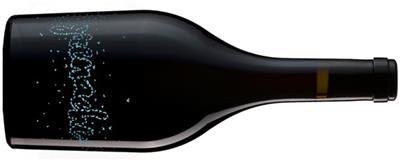 JC's Own Bluebird Grenache 2019 Jaysen Collins - I always get mesmerised when I see a flock of birds floating and drifting in the wind. It brings a sense of freedom and joy to me. I knew the bluebird is the symbol of happiness so I had a concept for the label – I just needed the wine! So with this idea floating about in my head, I set out to make a great drink that brings a true sense of delight. I found an east facing vineyard in the shallow soils of the Adelaide Hills that just gets the morning sun – no baked flavours here. I got rid of the stalks and just fermented this as whole berries. Just before coffee in the morning and after a cold beer in the afternoon I quickly give it a plunge by hand, nothing too serious or strenuous. It’s bottled early to catch the brightness I’m looking for, meaning it’s dangerously drinkable whenever you need a pick me up." £21.50 per bottle 20 bottles remain  Elderton Ashmead Cabernet Sauvignon 2017James Halliday "Full-bodied, rich and opulent..." Winemaker "Rich blackberry and cassis fruits follow on the palate, with nuances of bay leaf. The generous fruit flavours are supported by a backbone of tightly wound tannins that will further soften with medium to long term cellaring. £41.50 per bottle 29 bottles remain  Greenock Creek Cornerstone Grenache 2015 & 2018 The grapes for this wine are picked from a single estate vineyard from Greenock's Roennfeldt Road property at Marananga, near Greenock. All vines are around 80 years old. Growing on an east facing slope, these ancient bush vines produce a limited amount of small berried bunches, intensely perfumed and with magnificent colour. Winemaker "Cherry red with blueberry hues. Aromas of raspberries and red currants with hints of white pepper and strawberry blossoms. Juicy and generous. The vibrant red berried fruits are at the fore with supporting layers of sweet kitchen spices and rhubarb stems providing vibrancy to the mid palate. The oak is playing a supporting role, framing the mineral/stonewashed tannin profile that creates a creamy balance to the wine." 2015 vintage - £38.50 per bottle  ANCESTOR VINES These vines contain genetic material that has helped populate the region with irreplaceable old stocks that underpin viticultural tradition. They are mainly dry-grown, low-yielding vines that produce grapes of great flavour and intensity. They are believed to be among the oldest-producing vines in the world.  Planta Circa Ancestor Vine Grenache 201897++ Points - Stuart McCloskey “Grenache sourced from vines planted in 1880 and brought back to life through the talented and highly respected hands of Craig Stansborough. Aromatically, the wine is beautiful, filled with orange zest and a wash of red fruits ranging from raspberry through to cranberry. I detect spice and sweetness from cherry too… There’s a dusty, earthy overtone which provides a warming hug to the fruit. Dried, Mediterranean herbs – clearly a complex bouquet which keeps giving. The palate is focused, pure and spiced with sweet fruit which expands across my entire palate. The fruit feels mineral driven (I presume due to the depth of the ancient vine roots) with lavender and liquorice complementing. The tannins are discreet – the feel is seamless, with a snip of acidity providing outstanding definition. A blood orange sorbet-like feel keeps building and does not relinquish for many minutes. Suave and sophisticated. Drinking from 2020 to 2030+. Decanted for 1-2 hours and best served using Zalto Bordeaux glassware.” 97-98 Points - Magdalena Sienkiewicz "Lush aromas of sweet raspberry, cherries and redcurrants with a beautiful lift of fresh vanilla and sweet garden mint. The palate offers great depth with delicate fruit wrapped in layers of minerals and earth. Flavours, although complex, show a little restrain at this stage, but the nuanced structure shows there is plenty of detail yet to unfurl. Don’t hesitate opening if you love ethereal wines, as this is a stunning beauty today nevertheless. Truly a world class Grenache and something very special indeed. Sampled using Zalto Bordeaux Glass following one hour of decanting." £42.95 per bottle  Kay Brothers Amery Vineyard Block 6 Shiraz 2017 Decanter Magazine – Top 10 wineries in McLaren Vale 97 Points - James Halliday "Block 6 is a 1.4ha east-facing block of 125yo vines with very complex soils. Hand-picked, crushed and destemmed, 11 days on skins, matured for 20 months in French and American puncheons (40% new). If ever there was an iron fist in a velvet glove this is it, but with one qualification: the iron fist was created by a master sculptor, the wine quite special, and fully deserving its price." Top 20 Wines of 2019 - Financial Review Australia "In 1892, brothers Fred and Herbert Kay took shiraz cuttings from neighbour Thomas Hardy's vineyard in McLaren Vale and planted their own. Now, 125 years later, those same vines squeezed out 11 tonnes of intensely flavoured shiraz grapes to produce this magnificent, cellar-worthy wine. Best enjoyed now by splashing it into a decanter, leaving it for a couple of hours and then drinking from big-bowled glasses: lots of dark mulberry and sweet compost and a dusty tang to the tannins." £46.95 per bottle 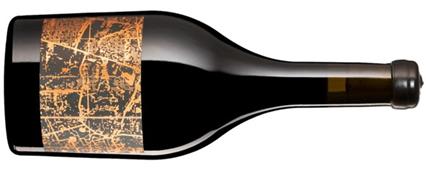 JC's Own Angaston Grenache 2017 & 2018 Jaysen Collins - "Old vine Barossa Grenache vineyards are a rare treat. Walking amongst the old bush wines gives me such a wonderment of what has transpired in the years gone by to get to this moment in time. It’s like I am breathing the air of times past – it can be truly something quite moving and somewhat magical. I’ve been working with Barossa Grenache since my first vintage and whilst versatile, it can easily become overly sweet and some people can even call it lolly water. But not this site – no way jose. It gets cool air draining from the Eden Valley across the red sands, so I’ve found it leans more toward complexity and structure, which is what pushes my buttons. How do I treat such a special site – pretty simply is the answer. 100% whole bunches get a foot treading over several weeks, I press it to large oak barrels and bottle it un-fined and unfiltered. That means when I taste this wine I’m still caught up in the magic from the vineyard that has transpired for well over a century. I’ll wipe the tear from my eye as I have another glass." 97++ Points - Stuart McCloskey “Sourced from old bush vines ageing 150 years in the Angaston Foothills. The bouquet is explosive and perfumed with blueberry, sweet spice, spiced cherry, cola, smoke, warm earth and minerals. The palate delivers a smörgåsbord of dark raspberry, pomegranate and blood orange with glimmers of liquorice in the background. The flavour profile continues along the same line with sweet, black raspberry, cassis, and sorbet-like blood orange. The flavours are deep and the palate wonderfully textured. There’s a spiced black pastille character which builds and builds. The tannins are sappy and fresh. There’s a seriousness but with equal measures of fun and built for those seeking an interplay of power and finesse. Mightily impressive. Drink now to 2027+. Served with Zalto Bordeaux glassware.” £28.95 per bottle  THE ART OF BLENDING In addition to the notable examples of old vine wines derived from single vineyards, Kay Brothers and Elderton have also developed a series of 'Estate' wines, which bring together fruit from several vineyards of varied age. Skilful blending results in beautifully crafted wines and fabulous value.  Kay Brothers Amery Hillside Vineyard Shiraz 2016 & 2017 Decanter Magazine – Top 10 wineries in McLaren Vale Hillside Shiraz allows Kay Brothers to pick various parcels of fruit so as to assemble the best blend possible. Block 11, located at the top of the hill, has shallow sandy loam soil over limestone and sandstone. These vines are very exposed to the wind and sun. As a consequence, the vines mature earlier in most years and tend to be low yielding, with intense fruit concentration and powerful tannins. The rest of the Hillside Shiraz is located farther down the hill, in New Block 6, where dark chocolate loam and clay soil dispersed with quartz and ironstone over silty limestone. The New Block 6 component provides the finesse and elegance to the overall blend with savoury flavours and tight structure. The blend of these two vineyards balances each other extremely well. £23.95 per bottle  Elderton Barossa Shiraz 2017 Vine age: 25 - 124 years Winemaker "Full bodied, rich & classic in style. Aromas of Black forest fruits, dark chocolate and vanilla with hints of coconut. Plum and berries on the palate with chocolate and a spice finish. The 2017 vintage was characterised by steady ripening of fruit across the Barossa. From our vineyards we were able to get great fresh flavours particular to each site, with some tight just-ripe tannins behind to balance the fruit. We love the freshness that 2017 brings, and the elegance in the wines as a result." £18.50 per bottle  Elderton Barossa Cabernet Sauvignon 2017 Vine age: 18 - 75 years Winemaker " Concentrated dark fruits fill the palate with hints of chocolate, supported by very fine elegant tannins that lead to a long and seamless finish. Full bodied, rich & classy. The 2017 Elderton Estate Barossa Cabernet Sauvignon is a fresh and very pure fruit driven wine with an underlying elegance, depictive of a cooler Barossa vintage." £18.50 per bottle  Elderton Barossa GSM 2018 Vine age: 20 - 45 years Nick Butler, The Real Review 2019 "Dark, ripe plums, cedary oak, graphite and charcuterie - plenty to consider when swirled in the glass. It's ripe and balanced - built on the sure foundation of quality fruit. The shiraz portion dominates the blend and it is all the better for it. Great work at the blending table. Delicious." £18.50 per bottle 30 bottles remain  DO OLD VINES MAKE BETTER WINES? The answer is as complex as the old vines themselves. Something isn't necessarily better just because it is old. Old vines do not automatically produce a better wine than the young ones – there are several other factors involved including climate, region and winemaking techniques. But if everything else is right, old vines can indeed produce wines of great finesse, depth and impressive balance. It is also important to note that old vines are often found on excellent sites which have allowed them to continuously grow and mature. Depending on where the vines are planted, they often grow deeper, more developed root systems, which in turn enable them to access more complex soils and micro-nutrients, as well as develop a stronger resistance to the struggles of vintage, such as drought stress and flooding rains. Old vines have less vigour, which means they grow fewer leaves and shoots, and the ratio of foliage to fruit is likely to be better balanced.  Image courtesy of Wine Australia What’s more, there is an emotional component to both producing and enjoying old-vine wines. First of all, the vines look impressive with their thick trunks and beautifully textured bark. Plus, Australia has the largest selection of old vine material in the world, which adds an enticing element of rarity. Some of these sites produce wine of extraordinary complexity and character. Given this rich history and romantic mystique, one could argue that these factors indeed make old-vine wines better. These wines are an expression of place: where Australia has been, where it is now and where it is heading. Ultimately, these vines have produced good fruit and good wine from a very early age. If they weren’t able to produce special fruit, they wouldn’t be around today...  THE STORY CONTINUES Many of our very own Aussie producers preserve and cultivate old vines; some have done so for generations. This is true not only for our friends in the Barossa, but in other regions of this vast continent as well. Both Stuart Pym (Flowstone) and Bruce Dukes (Domaine Naturaliste) care for their gnarly Cabernet Sauvignon vines in Margaret River. The oldest McLaren Vale winery to remain in founding family hands, Kay Brothers still tend the same vines which their ancestors planted in the 1890s. In Victoria, Owen Latta is looking after the Eastern Peake vineyards, which his parents planted in the 80s. These vineyards, together with Grey Sands in Tasmania and Wantirna Estate in Yarra Valley, will all reach the classified 'old vine' status by the end of this decade. The passion and dedication for the old vines in Australia continues. 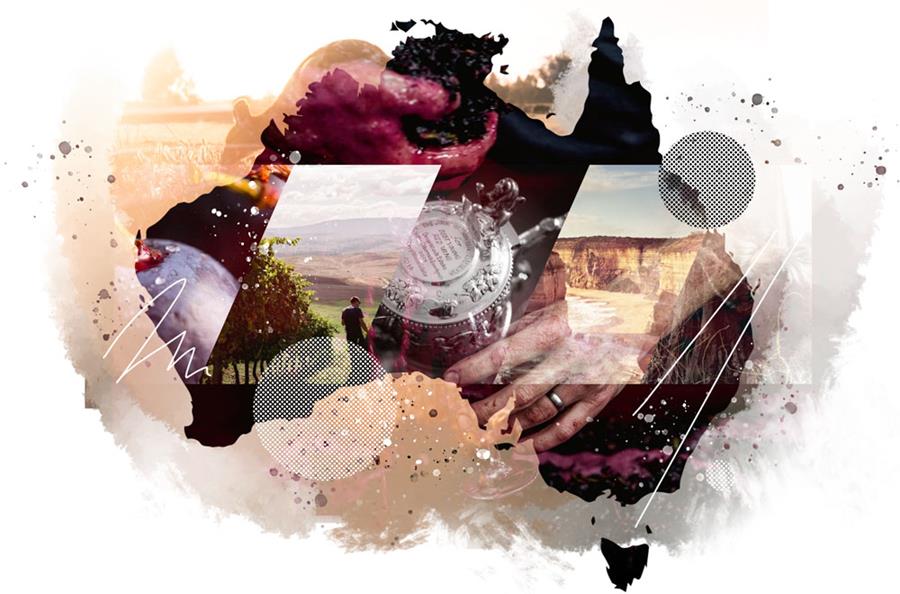 View our entire Australian collection |


